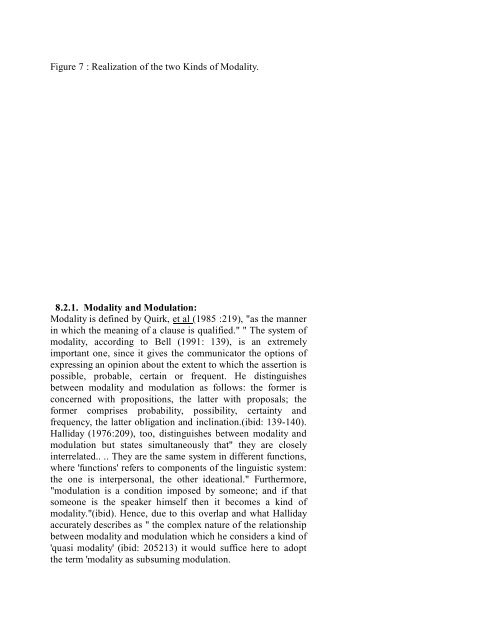424_2061_A.B.
424_2061_A.B.
424_2061_A.B.
- No tags were found...
Create successful ePaper yourself
Turn your PDF publications into a flip-book with our unique Google optimized e-Paper software.
Figure 7 : Realization of the two Kinds of Modality.8.2.1. Modality and Modulation:Modality is defined by Quirk, et al (1985 :219), "as the mannerin which the meaning of a clause is qualified." " The system ofmodality, according to Bell (1991: 139), is an extremelyimportant one, since it gives the communicator the options ofexpressing an opinion about the extent to which the assertion ispossible, probable, certain or frequent. He distinguishesbetween modality and modulation as follows: the former isconcerned with propositions, the latter with proposals; theformer comprises probability, possibility, certainty andfrequency, the latter obligation and inclination.(ibid: 139-140).Halliday (1976:209), too, distinguishes between modality andmodulation but states simultaneously that" they are closelyinterrelated.. .. They are the same system in different functions,where 'functions' refers to components of the linguistic system:the one is interpersonal, the other ideational." Furthermore,"modulation is a condition imposed by someone; and if thatsomeone is the speaker himself then it becomes a kind ofmodality."(ibid). Hence, due to this overlap and what Hallidayaccurately describes as " the complex nature of the relationshipbetween modality and modulation which he considers a kind of'quasi modality' (ibid: 205213) it would suffice here to adoptthe term 'modality as subsuming modulation.
















